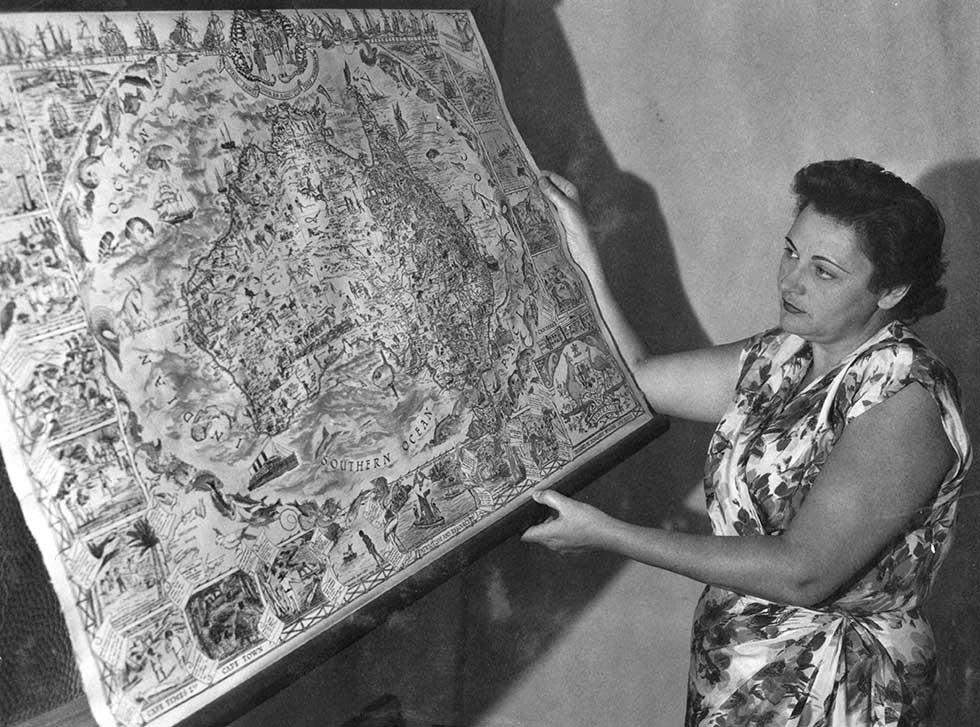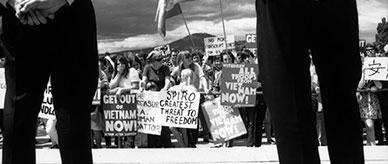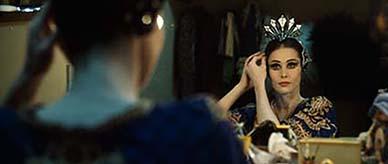


About this record
This is a black-and-white photograph showing Nancy Wake, decorated heroine of the French Resistance during the Second World War, holding a large tapestry depicting an illustrated map of Australia. The photograph was taken following her return to Australia.
Educational value
- Nancy Wake (1912–2011), aka 'Madame Andrée' and codenamed 'White Mouse' and 'Witch', was the most decorated servicewoman of World War II. She is famed for her courageous undercover activities in occupied France from 1940 to 1943, first as a courier of a French Resistance network and later with an escape network until it was betrayed. In December 1943 she left France and reached Britain where she joined the British Special Operations Executive, working with the Maquis resistance fighters from 1944 to 1945.
- Having earlier witnessed the brutality of the Nazi regime as a journalist, Wake joined the French Resistance in 1940 and risked her life in a network helping Jewish people and Allied servicemen to escape. Wake's network was very successful, and the Gestapo codenamed her 'White Mouse'. She was ordered to flee France in 1943 when the network was betrayed. Her husband, French industrialist Henri Fiocca, remained behind. He was killed by the Gestapo.
- Parachuted back into France in April 1944, Wake helped organise and fought alongside the Maquis resistance fighters before and after the D-day invasion. Using the alias 'Madame Andrée' and the codename 'Witch', she participated in the sabotage of German installations, organised parachute supply drops and maintained radio contact with the Special Operations Executive. When the radio codes were lost, Wake cycled about 500 kilometres in 72 hours to organise replacement codes.
- Wake's view of her wartime exploits was that she was glad she was there and did what she did. Wake hated war but believed that if it came, she, like other women, needed to play an active part. She commented, 'I don't see why we women should just wave our men a proud goodbye and then knit them balaclavas'. She is known to have killed a German sentry to prevent him raising the alarm during a sabotage raid.
- Wake was decorated by France, Britain and the United States but official recognition in Australia, the country of her youth, was very slow in coming. After the war she was awarded the George Medal, the French Croix de Guerre with two Palms, the US Medal for Freedom with Palm and the French Medaille de la Resistance. In 1988 she was awarded the French Chevalier of the Legion of Honour and, in 2004, she was finally appointed a Companion of the Order of Australia.
- After the war, Wake worked as a clerk for the British in France and then returned to Australia in 1948. In 1949 and 1951 she stood unsuccessfully as the Liberal Party candidate for the federal parliamentary seat of Barton and narrowly lost to HV Evatt. In 1951, she left Australia for Britain where she remarried in 1957. Returning to Australia with her husband in 1960, Wake again stood for parliament in 1966 without success. After the death of her husband, she returned to London to live in 2001.
Acknowledgments
Learning resource text © Education Services Australia Limited and the National Archives of Australia 2010.
Related themes
Need help with your research?
Learn how to interpret primary sources, use our collection and more.



